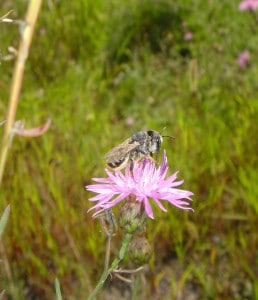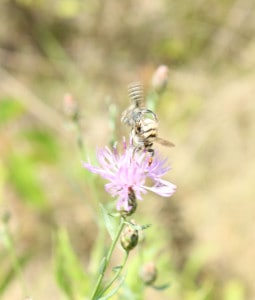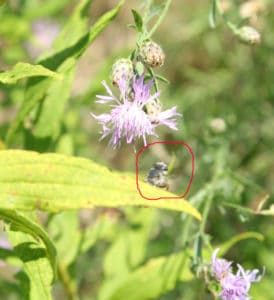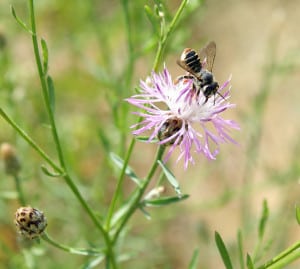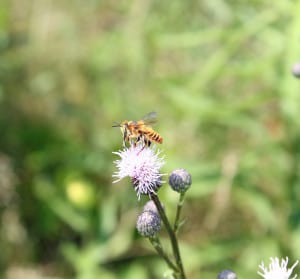
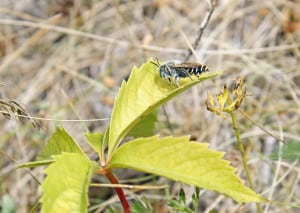
I have been collecting insects since 2005 and I collected almost anything unique to the eye. A majority of my collection was Coleoptera and Hymenoptera. In 2008, I started collecting native bees when I was using bowl traps for the Pennsylvania Department of Agriculture. My collecting was concentrated in Montgomery, Chester and Lehigh County.
Around this time the department was working on locating an invasive species by the name of Lithurgus chrysurus or the Mediterranean wood boring bee. The females cause damage to wood structures by burrowing into wood to nest. Overwintering of this bee occurs as prepupae inside a cocoon and they are univoltine, like numerous insects, where there is only one generation of brood in a year. This wood-boring bee was first found in PA in 2007. As soon as I heard about this bee I was intrigued and started looking for it. There are images to the right and above of the male, note the color variation.
After a few months of working I found this invasive species in my parent’s back yard and I discovered it on the biennial spotted knapweed. Ironically, spotted knapweed is also an invasive species and it produces chemicals that inhibit the growth of other plant species. This plant can cause quite a decline in biodiversity over time. I took many photographs and collected some specimens to make a positive identification on this bee and plant.
While observing the females I noticed they were very territorial and aggressive towards each other. There are some images below of some of the behavior I noticed. You can see in one image a bee that had been knocked down off the flower onto a leaf on its back.
